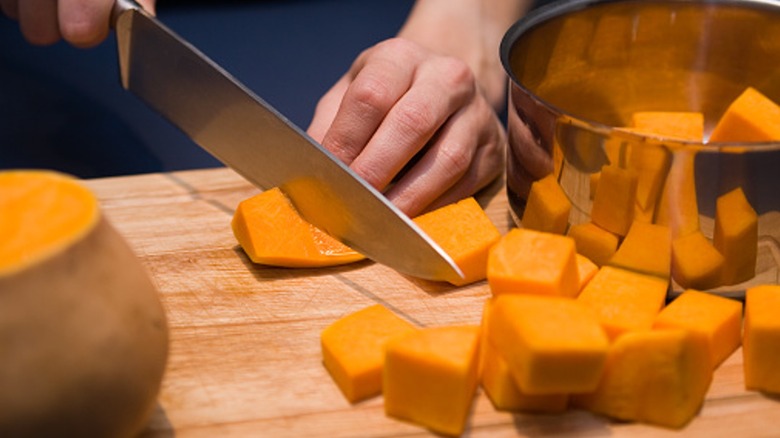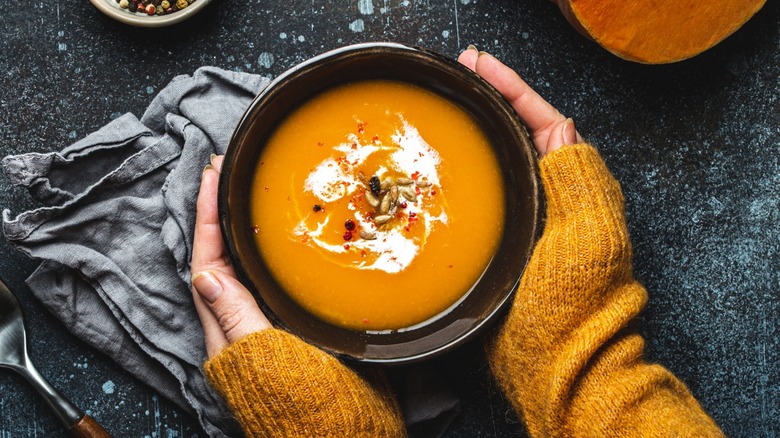Squash Hands Is A Real Thing, So Here's How To Prevent It
Butternut squash is scrumptiously sweet and marvelously nutty, the perfect complement to a crisp fall evening. As smooth as it is in your mouth, however, the harvest-time vegetable can unfortunately wreak havoc on your hands. It's common for chefs to have a strange, scabby layer of gunk on their skin that leaves them to briefly suffer from a warm, itchy sensation after they cut up pieces of butternut squash. That doesn't mean that you should put a hold on your autumnal recipes, though, since there are easy ways to prevent this reaction from occurring.
"Squash hands," as it's commonly called, is a type of contact dermatitis, a broad and annoying classification of skin allergies that can include anything from poison ivy to certain types of metal (via Cleveland Clinic). While some foods can cause people to break out in a rash when they're eaten, squash and other substances cause irritation simply by brushing against exposed skin. The specific chemical compound inside squash that produces the rash is currently unknown, but it seems to be linked to the Cucurbitaceae plant family. This includes pumpkins, zucchini, and watermelon, though the Cucurbita moschata species that butternut squash belongs to seems to do the most damage (via Bon Appétit).
How do you prevent squash hands?
The most obvious way to prevent squash hands is to avoid using the ingredient entirely, but it's depressing to abstain from the joys of turning butternut squash into a warm soup or a vessel for stuffing during the fall. Luckily, wearing food-grade gloves as a protective layer should help protect your sensitive hands from the stinging squash. Alternatively, you can also purchase squash that's already pre-cut into cubes, though this won't be as fresh buying it whole, and won't supply the same flexibility in recipes.
If you accidentally find yourself scrunching your hands up in distress after handling butternut squash, trying to peel or wash off the dried layer of residue won't do you any good. On the other hand, the reaction isn't permanent, so there's no use in freaking out if it looks like your hands are transforming into lizard claws. Instead, apply some moisturizer or, if especially intense, apply a steroid cream and wait it out. In about a half hour or so, your hands should feel like they're back to normal, and you can enjoy a cozy autumnal meal with your skin irritation squashed.


